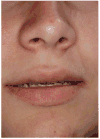New clinical protocol to evaluate craniomaxillofacial deformity and plan surgical correction
- PMID: 19761903
- PMCID: PMC2763487
- DOI: 10.1016/j.joms.2009.04.057
New clinical protocol to evaluate craniomaxillofacial deformity and plan surgical correction
Figures





















References
-
- National Center for Health Statistics. National Hospital Discharge Survey: Annual Summary with Detailed Diagnosis and Procedure Data. Vital and Health Statistics series 13 number 151. DHHS publication No.(PHS)2001-1722. National Center for Health Statistics; Hyattsville, MD: 1999. - PubMed
-
- National Institutes of Health. Management of temporomandibular disorders. National Institutes of Health Technology Assessment Conference Statement. J Am Dent Assoc. 1996;127:1595. - PubMed
-
- National Center for Health Statistics. Third National Health and Nutrition Examination Survey, (NHANES III, 1988-1994) National Center for Health Statistics; Hyattsville, MD: 1996.
-
- Proffit WR, Fields HW, Jr, Moray LJ. Prevalence of malocclusion and orthodontic treatment need in the United States: estimates from the NHANES III survey. Int J Adult Orthodon Orthognath Surg. 1998;13:97. - PubMed
-
- Chatzis V, Pitas I. Interpolation of 3-D binary images based on morphologicalskeletonization. Medical Imaging, IEEE Transactions. 2000;19:699. - PubMed
MeSH terms
Grants and funding
LinkOut - more resources
Full Text Sources
Other Literature Sources
Medical

